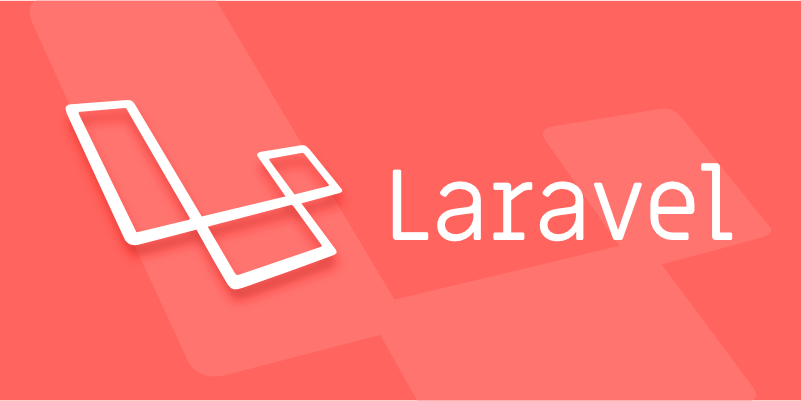Implementing Resource Controllers for RESTful APIs in Laravel?
Jul 07, 2025 am 12:04 AMResource Controllers in Laravel provide an efficient way to organize RESTful API code by automating standard HTTP actions. 1. They include predefined methods for index, create, store, show, edit, update, and destroy. 2. You generate them using the Artisan command php artisan make:controller PostController --resource. 3. Routes are defined with Route::resource('posts', PostController::class) in api.php or web.php. 4. You can limit routes using only() or except(). 5. Best practices include using plural resource names, applying middleware in constructors, and using API Resources for JSON responses.

When you're building RESTful APIs in Laravel, using Resource Controllers is one of the most efficient ways to organize your code. Instead of manually defining every route and controller method, a single command can scaffold out all the necessary methods for common actions like index, show, store, update, and destroy. It's clean, standardized, and saves time.

What Is a Resource Controller?
A Resource Controller in Laravel is a controller that includes predefined methods for handling typical HTTP actions:

-
index()– Show a list of resources -
create()– Display a form to create a new resource -
store()– Save a newly created resource -
show($id)– Display a specific resource -
edit($id)– Show a form to edit an existing resource -
update($id)– Update the specified resource -
destroy($id)– Delete the specified resource
You generate it with a simple Artisan command:
php artisan make:controller PostController --resource
This sets up all those methods ready for you to fill in with logic.

How to Define Routes Using Resource Controllers
Once you have a Resource Controller, wiring up routes becomes very straightforward. In your routes/api.php or web.php, use the Route::resource() helper:
Route::resource('posts', PostController::class);This single line creates all the standard routes mapped to the correct controller methods.
If you want only certain routes, you can limit them:
To include only some methods:
Route::resource('posts', PostController::class)->only(['index', 'show']);Or exclude some:
Route::resource('posts', PostController::class)->except(['create', 'edit']);
This is especially useful when building APIs where you don’t need create/edit views (since they’re usually handled on the frontend).
Tips for Customizing Resource Controllers
While the default setup works well, there are a few practical tweaks worth knowing:
Naming Conventions Matter
Use plural nouns for resource names (posts,users) to follow REST conventions. Laravel expects this structure in both routing and controllers.Custom Method Names
If you need to add custom methods to your controller (likerestore()orpublish()), consider making them part of a separate controller or use route macros if they’re related but not standard CRUD actions.API Resource Responses
When working with APIs, wrap your responses using Laravel’sresponse()->json()consistently. You might also look into Laravel API Resources for transforming models into JSON responses cleanly.Middleware Inside Controllers
You can apply middleware directly in the controller’s constructor. For example:public function __construct() { $this->middleware('auth')->except(['index', 'show']); }This helps secure your endpoints without cluttering your route files.
Final Notes
Using Resource Controllers doesn't just save time — it enforces consistency across your app. Whether you're building a small blog API or a large-scale application, sticking to this pattern makes your code easier to read and maintain. Just remember to tailor which routes you expose, especially in API contexts, and keep your response formatting consistent.
That’s pretty much it — nothing too complicated once you get used to the flow.
The above is the detailed content of Implementing Resource Controllers for RESTful APIs in Laravel?. For more information, please follow other related articles on the PHP Chinese website!

Hot AI Tools

Undress AI Tool
Undress images for free

Undresser.AI Undress
AI-powered app for creating realistic nude photos

AI Clothes Remover
Online AI tool for removing clothes from photos.

Clothoff.io
AI clothes remover

Video Face Swap
Swap faces in any video effortlessly with our completely free AI face swap tool!

Hot Article

Hot Tools

Notepad++7.3.1
Easy-to-use and free code editor

SublimeText3 Chinese version
Chinese version, very easy to use

Zend Studio 13.0.1
Powerful PHP integrated development environment

Dreamweaver CS6
Visual web development tools

SublimeText3 Mac version
God-level code editing software (SublimeText3)
 Working with pivot tables in Laravel Many-to-Many relationships
Jul 07, 2025 am 01:06 AM
Working with pivot tables in Laravel Many-to-Many relationships
Jul 07, 2025 am 01:06 AM
ToworkeffectivelywithpivottablesinLaravel,firstaccesspivotdatausingwithPivot()orwithTimestamps(),thenupdateentrieswithupdateExistingPivot(),managerelationshipsviadetach()andsync(),andusecustompivotmodelswhenneeded.1.UsewithPivot()toincludespecificcol
 Sending different types of notifications with Laravel
Jul 06, 2025 am 12:52 AM
Sending different types of notifications with Laravel
Jul 06, 2025 am 12:52 AM
Laravelprovidesacleanandflexiblewaytosendnotificationsviamultiplechannelslikeemail,SMS,in-appalerts,andpushnotifications.Youdefinenotificationchannelsinthevia()methodofanotificationclass,andimplementspecificmethodsliketoMail(),toDatabase(),ortoVonage
 Understanding Dependency Injection in Laravel?
Jul 05, 2025 am 02:01 AM
Understanding Dependency Injection in Laravel?
Jul 05, 2025 am 02:01 AM
Dependency injection automatically handles class dependencies through service containers in Laravel without manual new objects. Its core is constructor injection and method injection, such as automatically passing in the Request instance in the controller. Laravel parses dependencies through type prompts and recursively creates the required objects. The binding interface and implementation can be used by the service provider to use the bind method, or singleton to bind a singleton. When using it, you need to ensure type prompts, avoid constructor complications, use context bindings with caution, and understand automatic parsing rules. Mastering these can improve code flexibility and maintenance.
 Strategies for optimizing Laravel application performance
Jul 09, 2025 am 03:00 AM
Strategies for optimizing Laravel application performance
Jul 09, 2025 am 03:00 AM
Laravel performance optimization can improve application efficiency through four core directions. 1. Use the cache mechanism to reduce duplicate queries, store infrequently changing data through Cache::remember() and other methods to reduce database access frequency; 2. Optimize database from the model to query statements, avoid N 1 queries, specifying field queries, adding indexes, paging processing and reading and writing separation, and reduce bottlenecks; 3. Use time-consuming operations such as email sending and file exporting to queue asynchronous processing, use Supervisor to manage workers and set up retry mechanisms; 4. Use middleware and service providers reasonably to avoid complex logic and unnecessary initialization code, and delay loading of services to improve startup efficiency.
 Managing database state for testing in Laravel
Jul 13, 2025 am 03:08 AM
Managing database state for testing in Laravel
Jul 13, 2025 am 03:08 AM
Methods to manage database state in Laravel tests include using RefreshDatabase, selective seeding of data, careful use of transactions, and manual cleaning if necessary. 1. Use RefreshDatabasetrait to automatically migrate the database structure to ensure that each test is based on a clean database; 2. Use specific seeds to fill the necessary data and generate dynamic data in combination with the model factory; 3. Use DatabaseTransactionstrait to roll back the test changes, but pay attention to its limitations; 4. Manually truncate the table or reseed the database when it cannot be automatically cleaned. These methods are flexibly selected according to the type of test and environment to ensure the reliability and efficiency of the test.
 Choosing between Laravel Sanctum and Passport for API authentication
Jul 14, 2025 am 02:35 AM
Choosing between Laravel Sanctum and Passport for API authentication
Jul 14, 2025 am 02:35 AM
LaravelSanctum is suitable for simple, lightweight API certifications such as SPA or mobile applications, while Passport is suitable for scenarios where full OAuth2 functionality is required. 1. Sanctum provides token-based authentication, suitable for first-party clients; 2. Passport supports complex processes such as authorization codes and client credentials, suitable for third-party developers to access; 3. Sanctum installation and configuration are simpler and maintenance costs are low; 4. Passport functions are comprehensive but configuration is complex, suitable for platforms that require fine permission control. When selecting, you should determine whether the OAuth2 feature is required based on the project requirements.
 Implementing Database Transactions in Laravel?
Jul 08, 2025 am 01:02 AM
Implementing Database Transactions in Laravel?
Jul 08, 2025 am 01:02 AM
Laravel simplifies database transaction processing with built-in support. 1. Use the DB::transaction() method to automatically commit or rollback operations to ensure data integrity; 2. Support nested transactions and implement them through savepoints, but it is usually recommended to use a single transaction wrapper to avoid complexity; 3. Provide manual control methods such as beginTransaction(), commit() and rollBack(), suitable for scenarios that require more flexible processing; 4. Best practices include keeping transactions short, only using them when necessary, testing failures, and recording rollback information. Rationally choosing transaction management methods can help improve application reliability and performance.
 Handling HTTP Requests and Responses in Laravel.
Jul 16, 2025 am 03:21 AM
Handling HTTP Requests and Responses in Laravel.
Jul 16, 2025 am 03:21 AM
The core of handling HTTP requests and responses in Laravel is to master the acquisition of request data, response return and file upload. 1. When receiving request data, you can inject the Request instance through type prompts and use input() or magic methods to obtain fields, and combine validate() or form request classes for verification; 2. Return response supports strings, views, JSON, responses with status codes and headers and redirect operations; 3. When processing file uploads, you need to use the file() method and store() to store files. Before uploading, you should verify the file type and size, and the storage path can be saved to the database.






